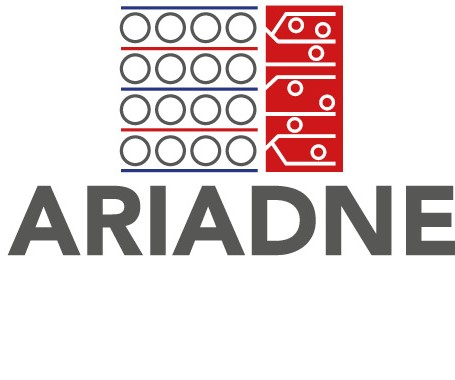 In ARIADNE we aim o develop a neuromorphic computing system based on a highly complex and dynamical integrated photonic neural network that is scalable, easy to fabricate and consumes low power. The final goal is to demonstrate an efficient and autonomous AI system that can learn to carry out high-speed smart sensing tasks in the optical domain. Examples are movement detection, surface classification, speech and sound recognition. These tasks can find application in several different fields, such as robotics, health monitoring, security, etc.
In ARIADNE we aim o develop a neuromorphic computing system based on a highly complex and dynamical integrated photonic neural network that is scalable, easy to fabricate and consumes low power. The final goal is to demonstrate an efficient and autonomous AI system that can learn to carry out high-speed smart sensing tasks in the optical domain. Examples are movement detection, surface classification, speech and sound recognition. These tasks can find application in several different fields, such as robotics, health monitoring, security, etc.
The project acronym is inspired by the ancient Greek myth of Theseus and the Minotaur, where princess Ariadne comes up with an ingenious way to help Theseus escape the labyrinth. In ARIADNE we let a machine learning algorithm learn to solve, loosely speaking, the spatio-temporal maze represented by the complicated dynamics in the considered photonic networks of integrated silicon microring resonators (see the figure below). In particular, the aim is to generate favourable network dynamics so as to carry out specific machine learning tasks with low latency, low computational cost and high energy efficiency.
Being able to control and fully exploit such dynamics would enable more scalable neuromorphic computing. Indeed, the effective dimension of the proposed neural network, and thus its potential computational power, is much larger than its physical appearance (i.e. considering microrings as neurons and waveguides as synapses). The reason is that the temporal and the wavelength dimensions of each resonator greatly increase the number of effective nodes and connections. This allows to deploy very large dynamic networks within a small footprint, providing a significant advantage over other neuromorphic computing platform and potentially giving birth to disruptive AI technologies. Moreover, coexistence of short-term and long-term memory (provided by nonlinear effects based on free-carriers and temperature in silicon mircoring resonators) allows for enhance computational power and broad applicability, and is in fact a key property of biological neural networks.
ARIADNE aims at combining integrated silicon photonics and machine learning in a powerful and simple way, exploiting the key advantages of both fields for novel and efficient smart sensing applications.
